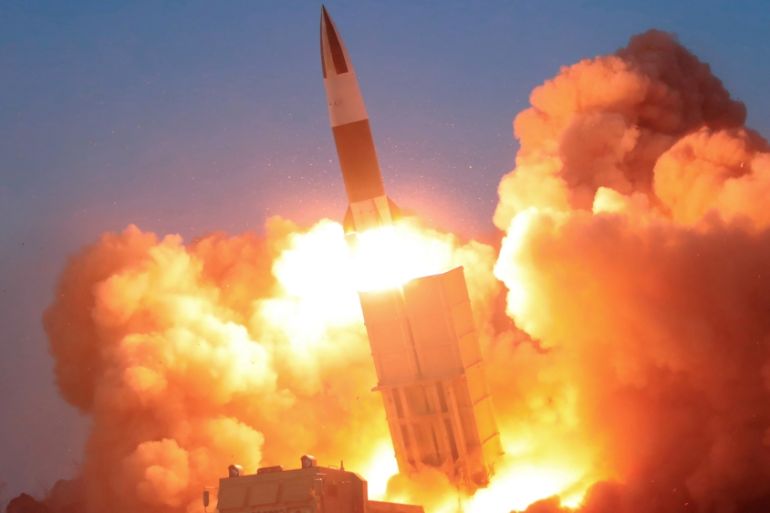Pyongyang facility ‘linked to North Korea’s missile programme’
Satellite images suggest facility near Pyongyang airport likely designed to support missile operations, think-tank says.

North Korea is building a facility near Pyongyang International Airport that is large enough to accommodate all its ballistic missiles, according to a new report from a prominent think-tank based in the United States.
In a report on Tuesday, the Center for Strategic and International Studies (CSIS) said the previously undisclosed facility “is nearing completion” and “is almost certainly related to North Korea’s expanding ballistic missiles program”.
Keep reading
list of 3 itemsNorth and South Korea ‘exchange gunfire across border’
Kim health rumours spotlight succession in secretive North Korea
The report, based on analysis of satellite imagery, said the facility was located approximately 17 kilometres (11 miles) northwest of the country’s capital, Pyongyang. Notable features include a large underground structure, an unusually large covered rail terminal and interconnected buildings designed for drive-through access.
The facility is also relatively close to ballistic missile component manufacturing plants in the Pyongyang area.
“Taken as a whole, these characteristics suggest that this facility is likely designed to support ballistic missile operations,” the report said, calling it the Sil-li Ballistic Missile Support Facility.
“As such, it is another component of the North Korean ballistic missile infrastructure that has been undergoing both modernization and expansion during the past 10 years.”
|
|
Negotiations aimed at dismantling North Korea’s nuclear and missile programmes have been deadlocked after working-level meetings with the US collapsed last year.
Kim Jong Un, the North Korean leader, has met US President Donald Trump three times and exchanged letters and envoys on many occasions since 2018, when they launched talks on the fate of Kim’s advancing nuclear arsenal.
But their diplomacy has largely come to a standstill since the breakdown of their second summit in Vietnam in February 2019, where Trump rejected Kim’s demands for broad sanctions relief in return for partial steps towards disarmament.
Kim pressed Trump to come up with new proposals to salvage the negotiations by the end of last year. Later, he pledged to bolster his nuclear deterrent and unveil “a new strategic weapon”, warning he would no longer be bound by a major weapons test moratorium.
In recent weeks, North Korea has fired a slew of artillery and other rockets into the sea in what experts said is an attempt to improve its military capabilities. The weapons were all short-range.
When asked about the CSIS report at a regular briefing in Seoul on Wednesday, a spokesman for South Korea’s Unification Ministry said it would be inappropriate to comment.
CSIS said the Sil-li facility has been under construction since 2016 and measures approximately 442,300 square metres (4.76 million square feet).
“A high-bay building within the facility is large enough to accommodate an elevated Hwasong-15 intercontinental ballistic missile and, therefore, the entirety of North Korea’s known ballistic missile variants,” the report said.
“The facility has been constructed next to an underground facility whose likely size is also large enough to easily accommodate all known North Korean ballistic missiles and their associated launchers and support vehicles.”
The buildings are connected by a wide surfaced-road network that could accommodate large trucks and ballistic missile launchers, the report said, adding that if construction continued at its current pace, it “could be complete and ready for operations sometime during late 2020 or early 2021”.